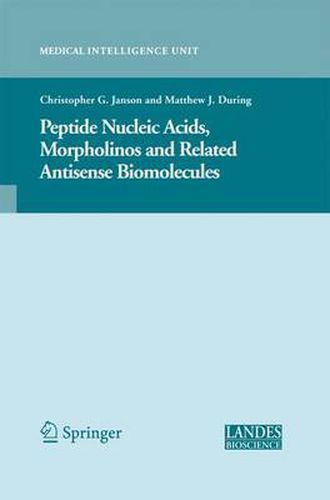Readings Newsletter
Become a Readings Member to make your shopping experience even easier.
Sign in or sign up for free!
You’re not far away from qualifying for FREE standard shipping within Australia
You’ve qualified for FREE standard shipping within Australia
The cart is loading…






This title is printed to order. This book may have been self-published. If so, we cannot guarantee the quality of the content. In the main most books will have gone through the editing process however some may not. We therefore suggest that you be aware of this before ordering this book. If in doubt check either the author or publisher’s details as we are unable to accept any returns unless they are faulty. Please contact us if you have any questions.
This volume is unique to the existing literature in the Peptide Nucleic Acid field, in that it focuses on comparing and contrasting PNA with other available oligonucleotide homologues and considers areas in which these biomolecules could be profitably applied to clinical and diagnostic applications. Part I of the book addresses comparative strengths and weaknesses of various nucleoside homologues. Part II of the book addresses specific translational or clinical applications for PNA and related antisense biomolecules. The editors have succeeded in presenting a balanced yet broad view of the methods available for gene targeting and modification.
$9.00 standard shipping within Australia
FREE standard shipping within Australia for orders over $100.00
Express & International shipping calculated at checkout
This title is printed to order. This book may have been self-published. If so, we cannot guarantee the quality of the content. In the main most books will have gone through the editing process however some may not. We therefore suggest that you be aware of this before ordering this book. If in doubt check either the author or publisher’s details as we are unable to accept any returns unless they are faulty. Please contact us if you have any questions.
This volume is unique to the existing literature in the Peptide Nucleic Acid field, in that it focuses on comparing and contrasting PNA with other available oligonucleotide homologues and considers areas in which these biomolecules could be profitably applied to clinical and diagnostic applications. Part I of the book addresses comparative strengths and weaknesses of various nucleoside homologues. Part II of the book addresses specific translational or clinical applications for PNA and related antisense biomolecules. The editors have succeeded in presenting a balanced yet broad view of the methods available for gene targeting and modification.